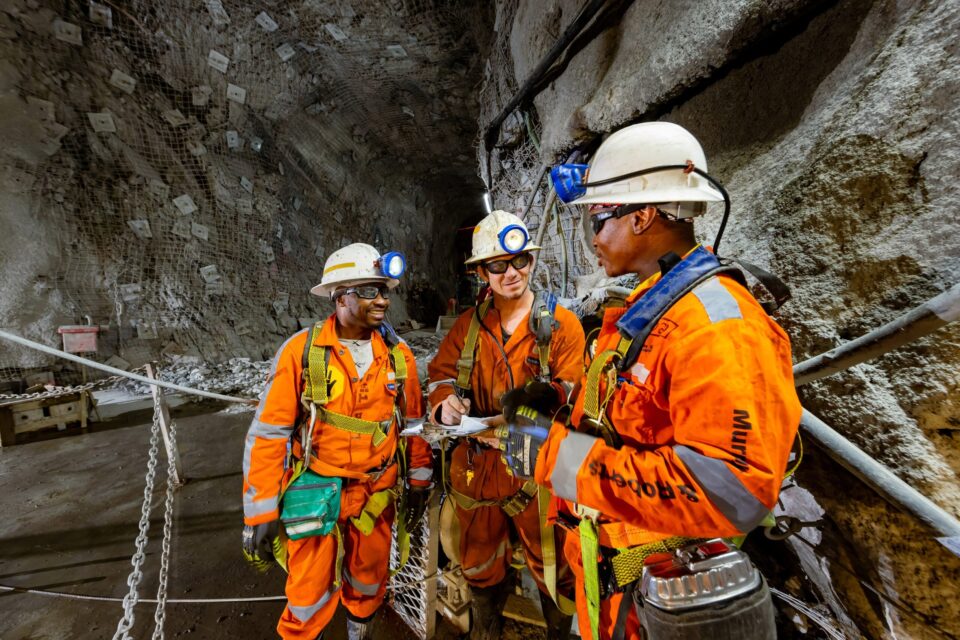While contractors are employed primarily to execute projects on behalf of mining companies and project houses, experienced underground mining specialists like Murray & Roberts Cementation also offer invaluable insights from earlier stages of development.
“Over the decades, we have found that our early engagement with clients provides many vital opportunities to optimise their ideas and plans,” says Graham Chamberlain, New Business Director at Murray & Roberts Cementation. “Especially in the shaft sinking phase – which is highly capital intensive – the devil is in the detail, and there are many aspects to consider when working to achieve a streamlined and cost effective process.”
Chamberlain highlights how the company is often engaged in the very early days of a project, to work with the client right from the concept and design phases. Often, third party consultants even use Murray & Roberts Cementation to conduct project designs, he says, as this creates a more seamless flow into the execution stage.
“Our approach is to work with the client on developing a range of options for each aspect of the project,” he explains. “This provides a broader scope of what is possible, with each option being discussed in the light of the client’s goals; these alternatives can be steadily whittled down to the two or three best, so that an intensive comparison can be conducted to make a final selection.”
A shaft design, for example, is a central factor in the successful performance of a mining operation – not just at its start but over its entire lifecycle. Whereas it may be considered feasible to reduce the diameter of shaft in the planning stage to reduce capital costs, a more farsighted view will expose the limitations that such a decision will create for the mine’s future.
“Technology in crushing, milling and processing is always evolving, and many mines can upgrade this infrastructure to generate more revenue,” he says. “However, such changes will be limited to 10 to 15% improvements if shaft capacity is at its limit. The shaft design therefore needs to accommodate the longer term goals of the mine – where market demand could allow throughput to grow in orders of magnitude.”
He emphasises the importance of understanding local conditions – both regulatory and physical – in managing risk on shaft sinking, development and contract mining projects. Where there are requirements for local procurement and hiring, for instance, the company has aligned its policies and developed extensive experience putting these into practice. These social and labour regulations, which are well established in South Africa, are also being applied across Africa and even in some South American countries.
Every project should be regarded as a ‘monument’ to the efforts of the developer, he explains, and therefore needs to leave a strong and positive legacy. This extends beyond the structural elements to the livelihoods, skills and prosperity of local communities. Murray & Roberts Cementation actively contributes to these developmental aspects, not least through its well-resourced training academy.
“Cost and productivity are key elements of success in our line of work, so risk needs to be carefully managed to produce the best outcome,” he says. “Many contractors operating globally in our field are not familiar with the unique requirements of the African market, and consequently, they often struggle to optimise cost and productivity factors in this region.”
Innovation also underpins the input that Murray & Roberts Cementation makes in planning for projects, Chamberlain continues. This is as much about developing new methodologies as it is about leaving others behind. Bold steps have been taken to find safer alternatives in equipment use; the cactus grab – historically a staple item on any shaft sinking site – is no longer employed, for instance.
“We adapted Canadian practices into a Murray & Roberts method of shaft sinking – using an understage-mounted excavator arm – to clean after blasts,” he says. “This is all part of a no-compromise approach to safety on our sites, which we share with clients as part of our initial discussions on scheduling, costs and productivity.”
A critical value-add from the company’s early engagement with clients is its extensive library or database of lessons learnt and technologies applied. This institutional knowledge, which dates back decades, can then be suitably ‘packaged’ by experienced practitioners who are experts in their field. He notes that one idea on its own is not going solve the various challenges that each project faces.
“Our work in the mining environment is complex, and must address matters from hoisting and logistics to safety factors and ground conditions,” he says. “The value of experience cannot be overstated, and requires careful consideration of all the options.”




